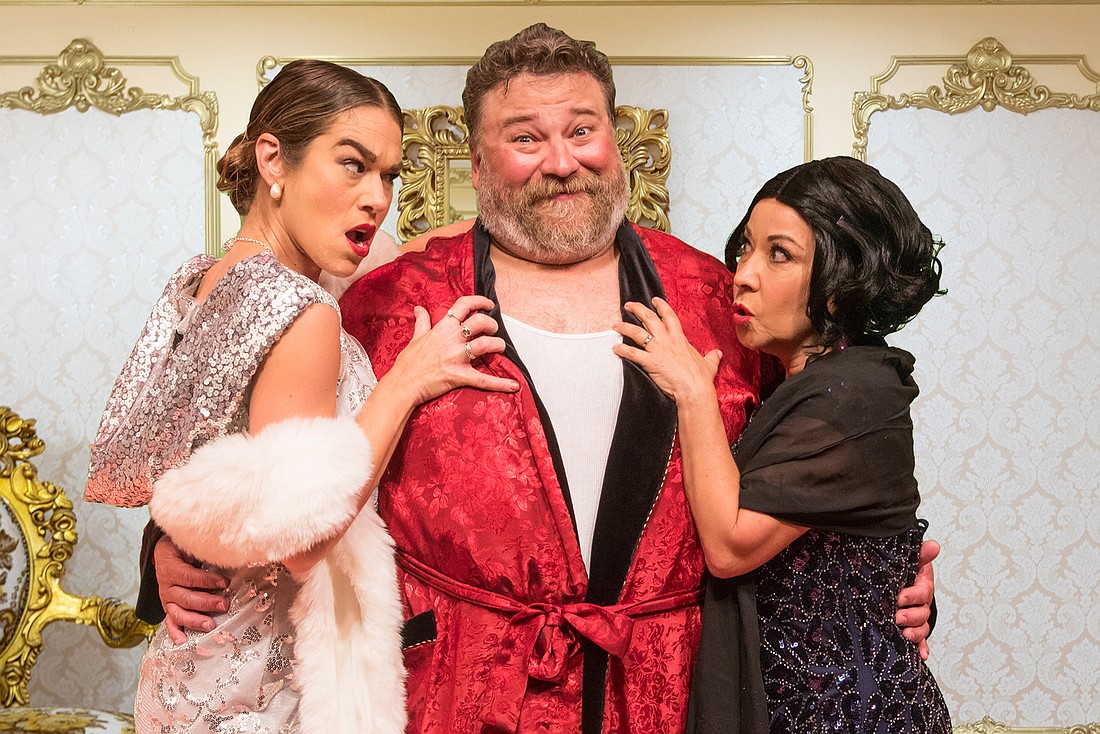- January 15, 2025
-
-
Loading

Loading

When it comes to farce, the clockwork of comedy is intricate. In a Ken Ludwig farce, the mechanism is intricate indeed. For hilarity to ensue, it all has to work like, well, clockwork. Director Sean Daniels is directing Ludwig’s “A Comedy of Tenors,” which opens Aug. 2 at Florida Studio Theatre. He loves the material he’s working with. But he has no illusions about its challenges. Some of those challenges are physical.
As Daniels sees it, the on-stage action in a Ludwig farce is part dance, part martial arts movie and part marathon. The actors don’t just stand around and talk.
“’A Comedy of Tenors’ is particularly athletic and puts serious demands on the human body,” he says. “While every cast member is a true athlete in great shape, early rehearsals were tough — and revealing.” He adds that the actors used rehearsals to figure out and fine-tune their movements.
“Until we got the timing down right, the actors were constantly running into doors, tossing themselves over couches. They wound up with a lot of scrapes and bruises and went through a lot of bandages and ointments. But they’re tough, and we’re over that part.”
While tough actors heal, props don’t.
“We broke a lot of rented furniture during rehearsals,” he says. “We finally went out and bought our own. It’s cheaper that way.”
What’s the comedy engine driving a Ludwig farce?
According to Daniels, farce or not, the playwright takes the underlying story seriously.
“To quote the great Mel Brooks, “When I cut my finger on a piece of paper, it’s a tragedy. When you walk into an open sewer and die, that’s comedy.’ So, comedy’s a tragedy that happens to somebody else. That’s Ludwig’s first comedy commandment. It’s hilarious if you’re sitting in the audience. In the worlds of his plays, nobody’s laughing.”
Daniels notes that Ludwig’s characters are relatable, flesh-and-blood human beings. Their farcical stories (which may be tragedies to them) are grounded in logic. He adds that there’s absolutely no winking at the audience implying the character's silly struggles shouldn’t be taken seriously.
“A Ludwig farce isn’t like the crazy, surreal absurdity of Monty Python routine where anything goes,” Daniels says. “They’re more like ‘The Office’ — or Shakespeare, for that matter. His comedies are plot-driven, with a strong sense of storytelling. They’re also character-based. Ludwig’s people don’t know they’re in a comedy. It’s not a farce to them! They take their stories very seriously. It matters to them."
Daniels adds: "In 'A Comedy of Tenors,' the characters’ careers are on life support — and they’re putting on an opera concert that could put them back on top. They don't want to fail and they don't want to flop. The stakes are real.”
The story matters to Ludwig’s characters. That means it has to matter to the actors playing them. It has to feel real to them. For the FST cast, it does.
“There’s a very touching scene where one of our leads has to cry on stage because he just can’t take it anymore,” says Daniels. “It gets me every time! It’s by far the realest thing we’ve done — and that means we’ve all done our work.”
He adds, “This play is about people desperately trying to make amazing art despite being foiled at every turn. I hope audiences will revel in the lengths we go to in order to put on a great show.”
In Daniels’ view, “A Comedy of Tenors” is true ensemble piece. To bring the farce to life, the actors must leave their egos at the door. They have. The cast is now working together like a well-oiled machine — and loving every minute. Rehearsals are done and everything clicks.
The only major snag?
Ludwig wrote the play for a specific theater — one that had a curtain. It stayed down when the audience took their seats. It went up for a big reveal of the spectacular set when the play began. FST’s stage has no curtain, so Daniels had to think fast.
“We need a fix to distract the audience,” Daniels says. “Who do you call? The playwright, obviously. He’s the ideal fixer. So, we asked Ken Ludwig for help. He could have said no. But he generously wrote a long monologue that did the job.”
Ludwig’s “A Comedy of Tenors” is a sequel to his “Lend Me a Tenor.” Do you need see his first farce to enjoy the follow-up?
“No,” Daniels says. “Ludwig’s sequel stands on its own. If you’re meeting these characters for the first time, you’ll have a blast. If you fell in love with them in the original, it’ll be like meeting old friends.”